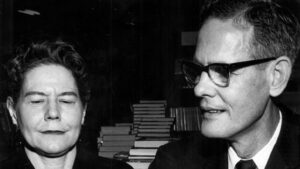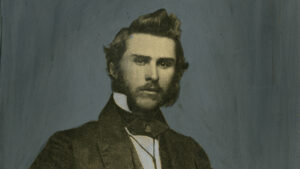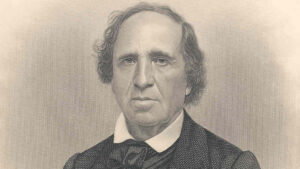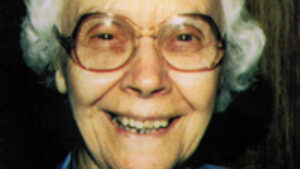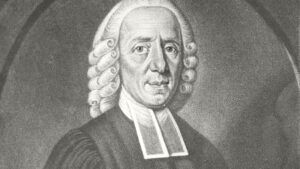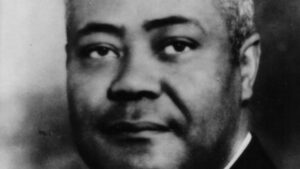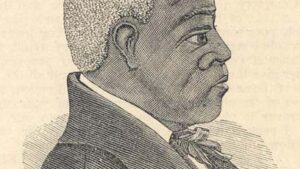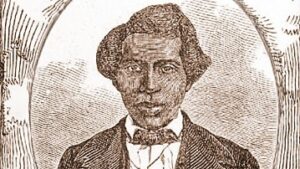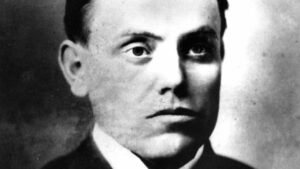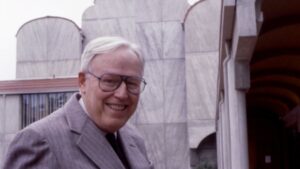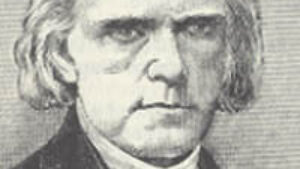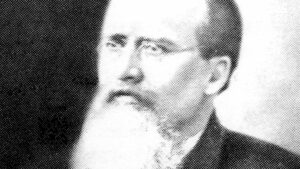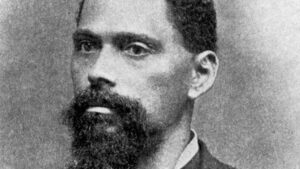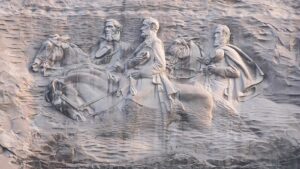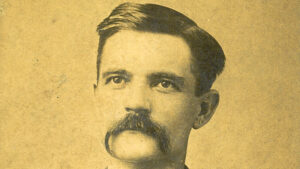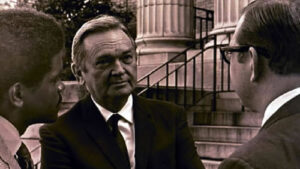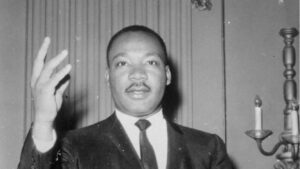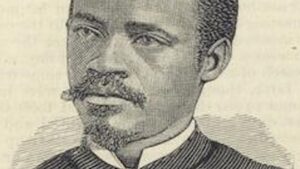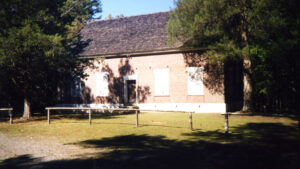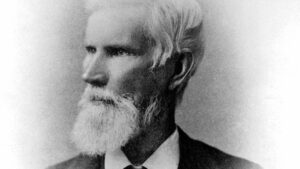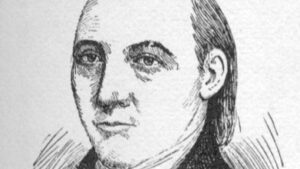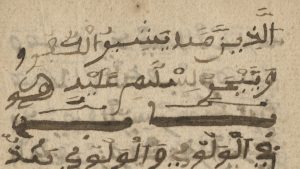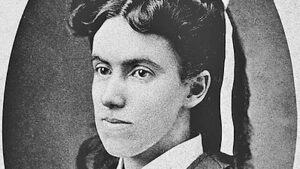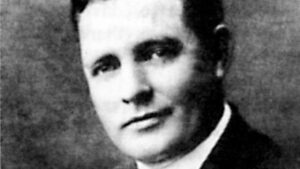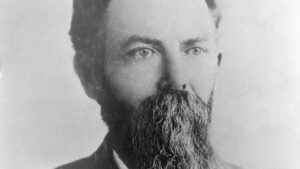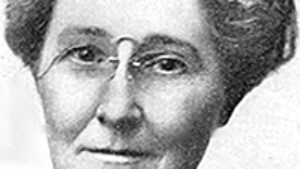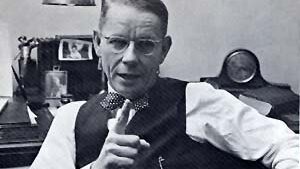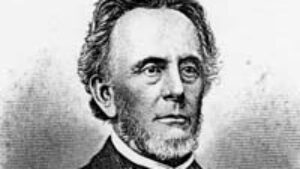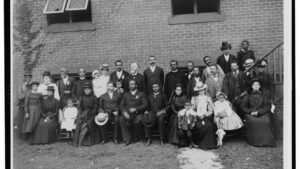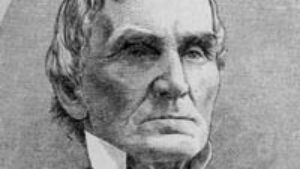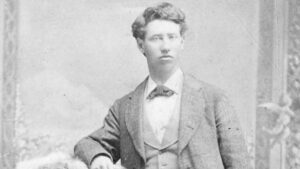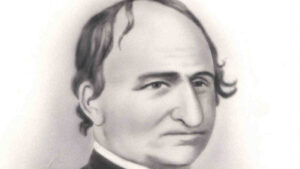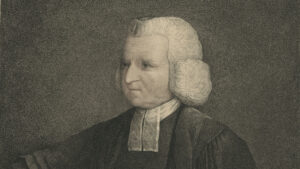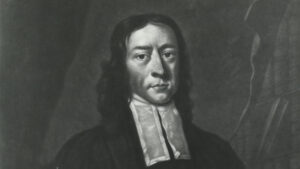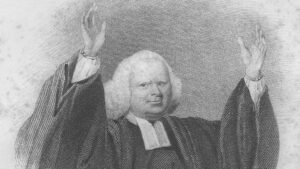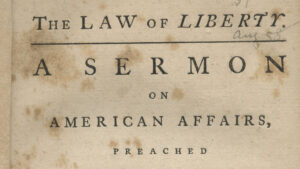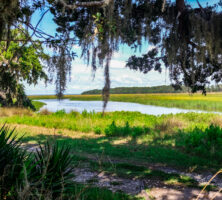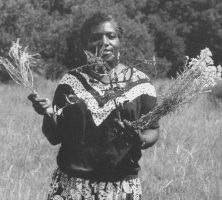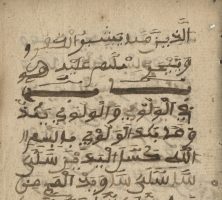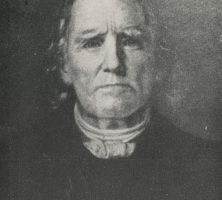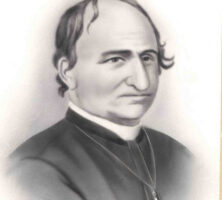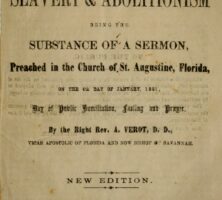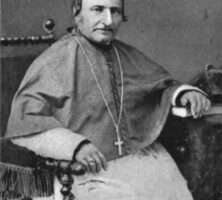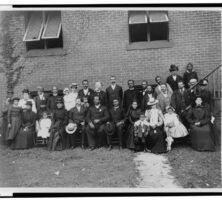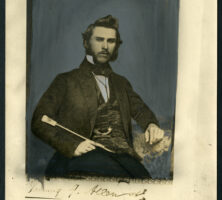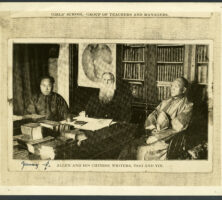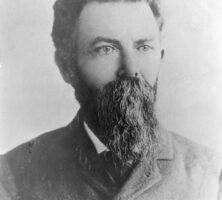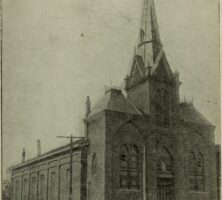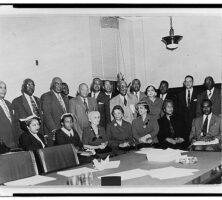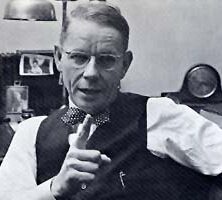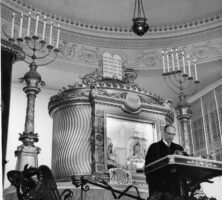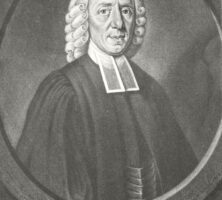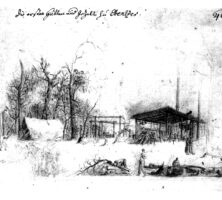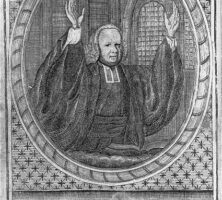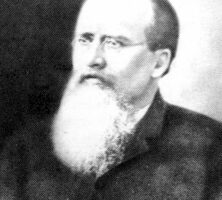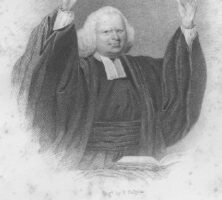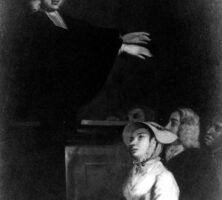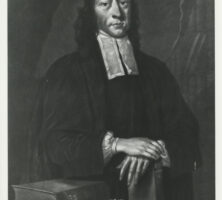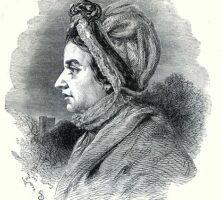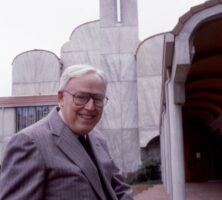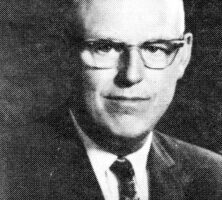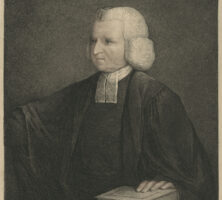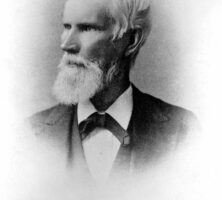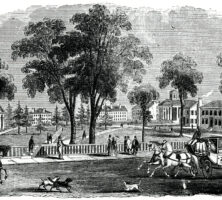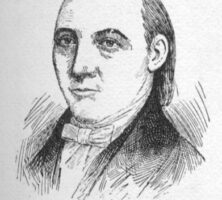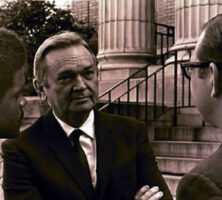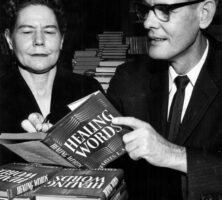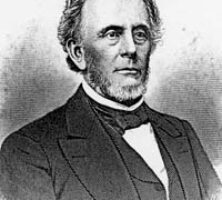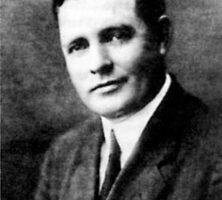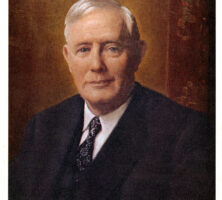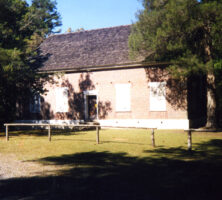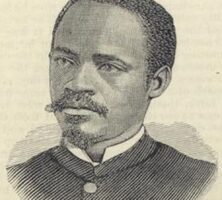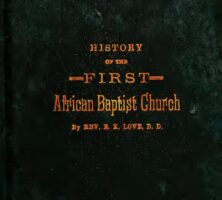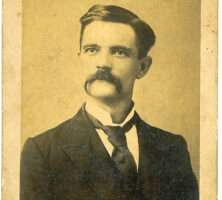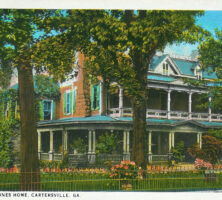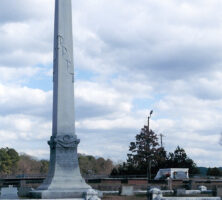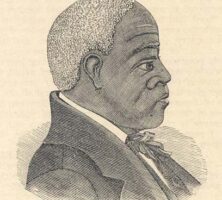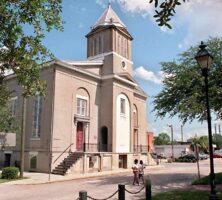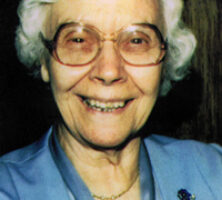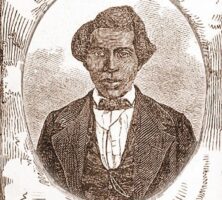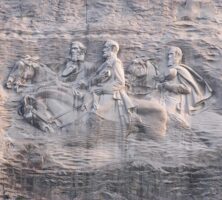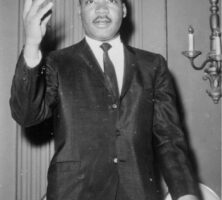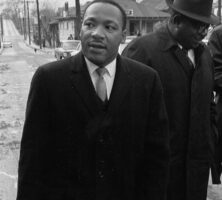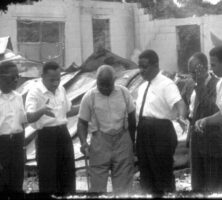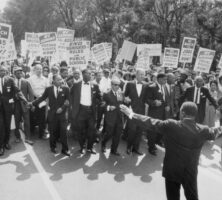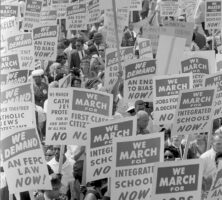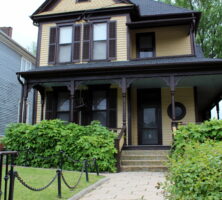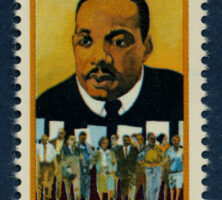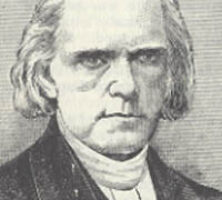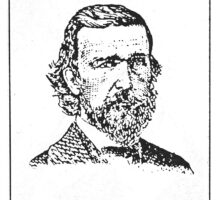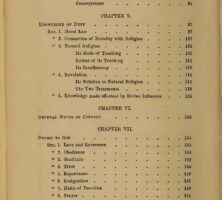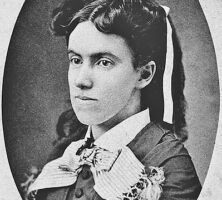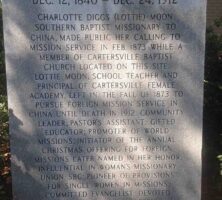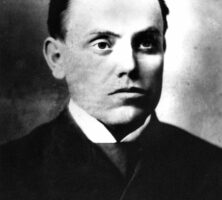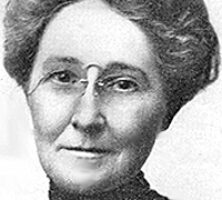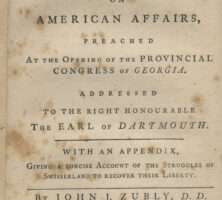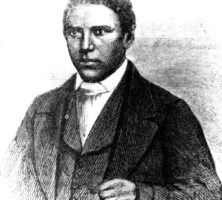The New Georgia Encyclopedia is supported by funding from A More Perfect Union, a special initiative of the National Endowment for the Humanities.
A scenic road cuts through the wilds of Sapelo Island. The barrier island is home to abundant plant and animal life.
Image from Kevin
The New Georgia Encyclopedia does not hold the copyright for this media resource and can neither grant nor deny permission to republish or reproduce the image online or in print. All requests for permission to publish or reproduce the resource must be submitted to the rights holder.
Cornelia Bailey gathers silver grass and life everlasting, an herb used by her grandfather to make medicinal tea, on Sapelo Island. Bailey received a 2004 Governor's Award in the Humanities for her efforts to preserve the island's Geechee culture.
Photograph by Richard Cheppy. Courtesy of Cornelia Bailey
The New Georgia Encyclopedia does not hold the copyright for this media resource and can neither grant nor deny permission to republish or reproduce the image online or in print. All requests for permission to publish or reproduce the resource must be submitted to the rights holder.
Bilali Mohammed, an enslaved African who lived openly as a Muslim on Sapelo Island, has been a subject of scholarly and popular interest since the nineteenth century. His experience is reflected in the “Bilali Document,” a brief manuscript he wrote concerning Islamic regulations.
Courtesy of Hargrett Rare Book and Manuscript Library, University of Georgia Libraries, Francis R. Goulding papers.
The New Georgia Encyclopedia does not hold the copyright for this media resource and can neither grant nor deny permission to republish or reproduce the image online or in print. Requests for permission to publish or reproduce the resource should be submitted to the Hargrett Manuscript and Rare Book Library at the University of Georgia.
Thomas Spalding, one-time owner and developer of Sapelo Island, was one of the leading planters on the tidewater, an agricultural innovator, amateur architect, astute businessman, and leading citizen of McIntosh County.
The New Georgia Encyclopedia does not hold the copyright for this media resource and can neither grant nor deny permission to republish or reproduce the image online or in print. Requests for permission to publish or reproduce the resource should be submitted to the Hargrett Manuscript and Rare Book Library at the University of Georgia.
Augustin Verot, known as the "Rebel Bishop" for his support of the Confederacy during the Civil War, became bishop of the Diocese of Savannah in 1861 and led the Catholic community through the turbulent years of war and Reconstruction.
Courtesy of Catholic Diocese of Savannah Archives
The New Georgia Encyclopedia does not hold the copyright for this media resource and can neither grant nor deny permission to republish or reproduce the image online or in print. All requests for permission to publish or reproduce the resource must be submitted to the rights holder.
On January 4, 1861 Augustin Verot delivered a sermon defending the practice of slavery and condemning abolitionism. It was later reprinted as a Confederate tract and circulated throughout the region, earning Verot wide acclaim in southern states.
The New Georgia Encyclopedia does not hold the copyright for this media resource and can neither grant nor deny permission to republish or reproduce the image online or in print. All requests for permission to publish or reproduce the resource must be submitted to the rights holder.
In the aftermath of the Civil War, Augustin Verot called for Catholic bishops to support the construction of schools and churches for freedmen.
The New Georgia Encyclopedia does not hold the copyright for this media resource and can neither grant nor deny permission to republish or reproduce the image online or in print. All requests for permission to publish or reproduce the resource must be submitted to the rights holder.
Members of the First Congregational Church, including the Reverend Henry Hugh Proctor (standing seventh from left), in Atlanta are pictured circa 1899. Today the church is an affiliate of the United Church of Christ, which formed in 1957.
Courtesy of Library of Congress, Prints and Photographs Division
The New Georgia Encyclopedia does not hold the copyright for this media resource and can neither grant nor deny permission to republish or reproduce the image online or in print. All requests for permission to publish or reproduce the resource must be submitted to the rights holder.
Henry Hugh Proctor, the minister at First Congregational Church in Atlanta from 1894 until 1920, is pictured circa 1900. In 1910 Proctor founded the Atlanta Colored Music Festival Association, which produced annual concerts by classically trained African American performers for nearly a decade.
Courtesy of Library of Congress, Prints and Photographs Division
The New Georgia Encyclopedia does not hold the copyright for this media resource and can neither grant nor deny permission to republish or reproduce the image online or in print. All requests for permission to publish or reproduce the resource must be submitted to the rights holder.
Young John Allen, born in Burke County and raised in Meriwether County, traveled as a Methodist missionary to Shanghai, China, in 1860 and remained there for much of his life. In addition to his ministry, Allen worked as a journalist and founded a college in Shanghai.
The New Georgia Encyclopedia does not hold the copyright for this media resource and can neither grant nor deny permission to republish or reproduce the image online or in print. For more information about this resource, contact the Stuart A. Rose Manuscript, Archives, and Rare Book Library at Emory University.
Mary Houston Allen, the wife of Young John Allen, a Methodist missionary to China, is pictured with her children, circa 1870. Before her marriage, Allen attended Wesleyan College in Macon.
The New Georgia Encyclopedia does not hold the copyright for this media resource and can neither grant nor deny permission to republish or reproduce the image online or in print. For more information about this resource, contact the Stuart A. Rose Manuscript, Archives, and Rare Book Library at Emory University.
Young John Allen (center), a Georgia native and Methodist missionary to Shanghai, China, is pictured with two Chinese writers, identified as Tsai and Yin, circa 1900. During his many decades in China, Allen founded the publication (Church News) and translated books.
The New Georgia Encyclopedia does not hold the copyright for this media resource and can neither grant nor deny permission to republish or reproduce the image online or in print. For more information about this resource, contact the Stuart A. Rose Manuscript, Archives, and Rare Book Library at Emory University.
John Morgan, pictured in 1890, arrived in Georgia as a missionary of the Church of Jesus Christ of Latter-day Saints in 1876. Two years later he was given authority over the church's Southern States Mission, headquarterd in Rome.
Courtesy of Special Collections Department, J. Willard Marriott Library, University of Utah
The New Georgia Encyclopedia does not hold the copyright for this media resource and can neither grant nor deny permission to republish or reproduce the image online or in print. All requests for permission to publish or reproduce the resource must be submitted to the rights holder.
Joseph Standing was sent as a Mormon missionary to Georgia in 1878. The following year he was killed by a mob in Whitfield County while traveling with fellow missionary Rudger Clawson. A memorial park at the murder site was dedicated to Standing in 1952.
Courtesy of Special Collections Department, J. Willard Marriott Library, University of Utah
The New Georgia Encyclopedia does not hold the copyright for this media resource and can neither grant nor deny permission to republish or reproduce the image online or in print. All requests for permission to publish or reproduce the resource must be submitted to the rights holder.
The Reverend William Holmes Borders served as pastor of Wheat Street Baptist Church in Atlanta from 1937 to 1988. In the late 1950s he led the Love, Law, and Liberation Movement to desegregate the city's bus system, and in the 1960s he arranged for the construction of a low-income housing project, Wheat Street Gardens.
Courtesy of Wheat Street Baptist Church; Estate of the Reverend William Holmes Borders Sr.
The New Georgia Encyclopedia does not hold the copyright for this media resource and can neither grant nor deny permission to republish or reproduce the image online or in print. All requests for permission to publish or reproduce the resource must be submitted to the rights holder.
Wheat Street Baptist Church, located in the Sweet Auburn district of Atlanta, was founded in 1869. The church building, located at the corner of Auburn Avenue and Yonge Street (later William Holmes Borders Drive), was constructed between 1921 and 1939. William Holmes Borders, a prominent civil rights activist, was pastor of the church from 1937 to 1988.
From The United Negro: His Problems and His Progress: Containing the Addresses and Proceedings the Negro Young People's Christian and Educational Congress, Held August 6-11, 1902, by Irvine Garland Penn and John W. E. Bowen Sr.
The New Georgia Encyclopedia does not hold the copyright for this media resource and can neither grant nor deny permission to republish or reproduce the image online or in print. All requests for permission to publish or reproduce the resource must be submitted to the rights holder.
Members of the National Association for the Advancement of Colored People gather in February 1957 for civil rights hearings held before the U.S. Senate in Washington, D.C. Prominent leaders from Georgia include A. T. Walden (second row, fourth from left) and the Reverend William Holmes Borders (second row, fifth from left).
Courtesy of Library of Congress, Prints and Photographs Division, Visual Materials from the National Association for the Advancement of Colored People Records, #LC-USZ62-126520.
The New Georgia Encyclopedia does not hold the copyright for this media resource and can neither grant nor deny permission to republish or reproduce the image online or in print. All requests for permission to publish or reproduce the resource must be submitted to the rights holder.
Leaders of the movement to desegregate the bus system in Atlanta gather in the office of Rev. William Holmes Borders (seated) at Wheat Street Baptist Church. From left, Rev. R. B. Shorts, Rev. R. Joseph Johnson, Rev. Howard T. Bussey, and Rev. Ray Williams.
Courtesy of Wheat Street Baptist Church; Estate of the Reverend William Holmes Borders Sr.
The New Georgia Encyclopedia does not hold the copyright for this media resource and can neither grant nor deny permission to republish or reproduce the image online or in print. All requests for permission to publish or reproduce the resource must be submitted to the rights holder.
Louie D. Newton, pictured in 1949 in his office at Druid Hills Baptist Church in Atlanta, was a prominent Baptist preacher, author, editor, radio personality, and denominational leader. A native of Screven County, Newton was the pastor at Druid Hills from 1929 until his retirement in 1968.
Courtesy of Christian Index
The New Georgia Encyclopedia does not hold the copyright for this media resource and can neither grant nor deny permission to republish or reproduce the image online or in print. All requests for permission to publish or reproduce the resource must be submitted to the rights holder.
Jacob Rothschild, who served as rabbi for the Hebrew Benevolent Congregation in Atlanta from 1946 to 1973, reads during a Rosh Hashanah service. During his tenure Rothschild was an advocate for civil rights and developed a close friendship with Martin Luther King Jr.
Courtesy of Atlanta Journal-Constitution.
The New Georgia Encyclopedia does not hold the copyright for this media resource and can neither grant nor deny permission to republish or reproduce the image online or in print. All requests for permission to publish or reproduce the resource must be submitted to the Atlanta Journal-Constitution.
Lutheran minister Johann Martin Boltzius, along with religious refugees from Salzburger, founded the settlement of Ebenezer near Savannah in the early 1730s as a religious utopia. Boltzius hoped to create a successful economic system that was not dependent upon slavery.
The New Georgia Encyclopedia does not hold the copyright for this media resource and can neither grant nor deny permission to republish or reproduce the image online or in print. Requests for permission to publish or reproduce the resource should be submitted to the Hargrett Manuscript and Rare Book Library at the University of Georgia.
This sketch of the early Ebenezer settlement was drawn in 1736 by Philip Georg Friedrich von Reck. That same year the Salzburger settlement moved to a location closer to the Savannah River, where conditions were better for farming.
Print from Von Reck Archive, Royal Library of Denmark, Copenhagen
The New Georgia Encyclopedia does not hold the copyright for this media resource and can neither grant nor deny permission to republish or reproduce the image online or in print. All requests for permission to publish or reproduce the resource must be submitted to the rights holder.
An engraving of Anglican minister George Whitefield, created in 1774, depicts him preaching at a church in New York. A popular figure of the eighteenth-century Great Awakening in America, Whitefield founded the Bethesda orphanage near Savannah in 1740.
Courtesy of Library of Congress, Prints and Photographs Division
The New Georgia Encyclopedia does not hold the copyright for this media resource and can neither grant nor deny permission to republish or reproduce the image online or in print. All requests for permission to publish or reproduce the resource must be submitted to the rights holder.
Atticus G. Haygood, a bishop of the Methodist Episcopal Church, South, rose to national prominence around 1880 with a Thanksgiving speech and a book extolling the contributions of African Americans since emancipation. Haygood served as president of Emory College in Oxford from 1875 until 1884.
Courtesy of Moore Methodist Museum
The New Georgia Encyclopedia does not hold the copyright for this media resource and can neither grant nor deny permission to republish or reproduce the image online or in print. All requests for permission to publish or reproduce the resource must be submitted to the rights holder.
George Whitefield, an Anglican minister, was the central figure of the Great Awakening, which occurred from about 1720 to 1780 in America. The series of revivals sparked a move away from formal, outward religion to inward, personal religion.
The New Georgia Encyclopedia does not hold the copyright for this media resource and can neither grant nor deny permission to republish or reproduce the image online or in print. All requests for permission to publish or reproduce the resource must be submitted to the rights holder.
With funds raised primarily in his native England, Anglican minister George Whitefield opened the Bethesda Orphan House in Savannah in 1740. In 1791 the state assumed control of the orphanage and later opened an academy.
The New Georgia Encyclopedia does not hold the copyright for this media resource and can neither grant nor deny permission to republish or reproduce the image online or in print. Requests for permission to publish or reproduce the resource should be submitted to the Hargrett Manuscript and Rare Book Library at the University of Georgia.
John Wesley, one of the founders of Methodism, traveled to Georgia from England with his brother Charles in 1735 and served as the Anglican rector of Christ Church in Savannah until 1738. Upon his return to England, Wesley experienced a conversion, influenced in part by the Moravain settlers he encountered while in Georgia, that marked the beginning of his evangelical work.
The New Georgia Encyclopedia does not hold the copyright for this media resource and can neither grant nor deny permission to republish or reproduce the image online or in print. Requests for permission to publish or reproduce the resource should be submitted to the Hargrett Manuscript and Rare Book Library at the University of Georgia.
Susanna Wesley was the mother of John and Charles Wesley, the cofounders of Methodism during the eighteenth century. Wesley provided an early education to her sons during their boyhood in England, and both continued their studies at Christ Church College at Oxford University before traveling to Georgia in 1735.
Photograph by Wikimedia
The New Georgia Encyclopedia does not hold the copyright for this media resource and can neither grant nor deny permission to republish or reproduce the image online or in print. All requests for permission to publish or reproduce the resource must be submitted to the rights holder.
The New Georgia Encyclopedia does not hold the copyright for this media resource and can neither grant nor deny permission to republish or reproduce the image online or in print. All requests for permission to publish or reproduce the resource must be submitted to the rights holder.
William Ragsdale Cannon, a United Methodist bishop from 1968 until 1984, stands outside of Emory University's Cannon Chapel. The chapel was consecrated in 1981 and named in honor of the bishop, who had previously served as dean of the university's Candler School of Theology.
Courtesy of Emory University Photography
The New Georgia Encyclopedia does not hold the copyright for this media resource and can neither grant nor deny permission to republish or reproduce the image online or in print. All requests for permission to publish or reproduce the resource must be submitted to the rights holder.
William Ragsdale Cannon, a United Methodist minister and educator, was dean of the Candler School of Theology at Emory University from 1953 to 1968. He was named a bishop in 1968 and served areas in Georgia, North Carolina, and Virginia during his sixteen-year tenure.
Courtesy of Moore Methodist Museum
The New Georgia Encyclopedia does not hold the copyright for this media resource and can neither grant nor deny permission to republish or reproduce the image online or in print. All requests for permission to publish or reproduce the resource must be submitted to the rights holder.
Charles Wesley is best known as one of the founders of Methodism in the eighteenth century. In 1735, along with his brother John, Wesley traveled from England to Georgia, where he served as secretary to James Oglethorpe and as chaplain at Fort Frederica.
The New Georgia Encyclopedia does not hold the copyright for this media resource and can neither grant nor deny permission to republish or reproduce the image online or in print. Requests for permission to publish or reproduce the resource should be submitted to the Hargrett Manuscript and Rare Book Library at the University of Georgia.
James Osgood Andrew presided as senior bishop over the Methodist Episcopal Church, South, from 1846 until his death. Andrew College in Cuthbert was named for him.
Courtesy of Andrew College
The New Georgia Encyclopedia does not hold the copyright for this media resource and can neither grant nor deny permission to republish or reproduce the image online or in print. All requests for permission to publish or reproduce the resource must be submitted to the rights holder.
Adiel Sherwood was one of the most influential Baptists in Georgia during the nineteenth century. In addition to his preaching and mission work, Sherwood was also a temperance activist, an educator, and a prolific writer.
Courtesy of Jack Tarver Library Special Collections, Mercer University
The New Georgia Encyclopedia does not hold the copyright for this media resource and can neither grant nor deny permission to republish or reproduce the image online or in print. All requests for permission to publish or reproduce the resource must be submitted to the rights holder.
Patrick Hues Mell, a native of Liberty County, was a prominent Baptist leader in the state during the nineteenth century. Also an influential educator, Mell taught at Emory College, Mercer University, and the University of Georgia, where he became chancellor in 1878.
The New Georgia Encyclopedia does not hold the copyright for this media resource and can neither grant nor deny permission to republish or reproduce the image online or in print. Requests for permission to publish or reproduce the resource should be submitted to the Hargrett Manuscript and Rare Book Library at the University of Georgia.
An early sketch, circa 1850, of the University of Georgia in Athens depicts the Franklin College quadrangle as seen from the southwest across Broad Street. The architecture of the campus was modeled after that of Yale University in Connecticut, the alma mater of Abraham Baldwin, UGA's first president.
The New Georgia Encyclopedia does not hold the copyright for this media resource and can neither grant nor deny permission to republish or reproduce the image online or in print. Requests for permission to publish or reproduce the resource should be submitted to the Hargrett Manuscript and Rare Book Library at the University of Georgia.
Jesse Mercer, a prominent Baptist leader in Georgia, served as president of the Georgia Baptist Convention from 1822 until his death in 1841. Also an active publisher, Mercer compiled a hymnal in 1810 and edited the Christian Index, a Baptist newspaper, from 1833 to 1840. In 1833 he founded Mercer Institute, which later became Mercer University.
The New Georgia Encyclopedia does not hold the copyright for this media resource and can neither grant nor deny permission to republish or reproduce the image online or in print. All requests for permission to publish or reproduce the resource must be submitted to the rights holder.
Clarence Jordan (center), a Southern Baptist preacher known for his dedication to racial reconciliation and economic justice, attends a church meeting. In addition to preaching and speaking around the country, Jordan cofounded Koinonia Farm and wrote the "Cotton Patch" versions of New Testament books.
Courtesy of Koinonia Partners
The New Georgia Encyclopedia does not hold the copyright for this media resource and can neither grant nor deny permission to republish or reproduce the image online or in print. All requests for permission to publish or reproduce the resource must be submitted to the rights holder.
Charles Allen, a well-known United Methodist minister, writer, and broadcaster, signs copies of his book (1961). Allen served as pastor of Grace Methodist Church in Atlanta from 1948 to 1960 and broadcast his sermons on both radio and television.
Courtesy of Atlanta Journal-Constitution.
The New Georgia Encyclopedia does not hold the copyright for this media resource and can neither grant nor deny permission to republish or reproduce the image online or in print. All requests for permission to publish or reproduce the resource must be submitted to the Atlanta Journal-Constitution.
George Foster Pierce, a Methodist minister and native of Greene County, served as the president of both Georgia Female College and Emory College before his 1854 election as bishop. A supporter of the Confederacy during the Civil War, Pierce defended the ownership of enslaved people by church leaders, an issue which created a breach between northern and southern Methodists.
Courtesy of Moore Methodist Museum
The New Georgia Encyclopedia does not hold the copyright for this media resource and can neither grant nor deny permission to republish or reproduce the image online or in print. All requests for permission to publish or reproduce the resource must be submitted to the rights holder.
Arthur Moore was a prominent Methodist bishop in the Atlanta area from 1940 until his retirement in 1960. Before coming to Atlanta, Moore served as the pastor of churches in Texas and Alabama and, while bishop of the Pacific Coast area, led the Bishops' Crusade in 1937.
Courtesy of Moore Methodist Museum
The New Georgia Encyclopedia does not hold the copyright for this media resource and can neither grant nor deny permission to republish or reproduce the image online or in print. All requests for permission to publish or reproduce the resource must be submitted to the rights holder.
Upon his retirement in 1960 as the Methodist bishop in the Atlanta area, Arthur Moore continued his work through the Arthur J. Moore Evangelistic Association.
Courtesy of Moore Methodist Museum
The New Georgia Encyclopedia does not hold the copyright for this media resource and can neither grant nor deny permission to republish or reproduce the image online or in print. All requests for permission to publish or reproduce the resource must be submitted to the rights holder.
Kiokee Baptist Church, located today in Appling, is the oldest Baptist church still active in Georgia. Pictured is the church's third building, which was constructed in 1808 several miles outside Appling in Columbia County.
Courtesy of Jarrett Burch
The New Georgia Encyclopedia does not hold the copyright for this media resource and can neither grant nor deny permission to republish or reproduce the image online or in print. All requests for permission to publish or reproduce the resource must be submitted to the rights holder.
The New Georgia Encyclopedia does not hold the copyright for this media resource and can neither grant nor deny permission to republish or reproduce the image online or in print. All requests for permission to publish or reproduce the resource must be submitted to the rights holder.
E. K. Love was a Baptist minister, missionary, and writer in the late nineteenth century. This sketch of Love is taken from his History of the First African Baptist Church, which was published in 1888.
From History of the First African Baptist Church
The New Georgia Encyclopedia does not hold the copyright for this media resource and can neither grant nor deny permission to republish or reproduce the image online or in print. All requests for permission to publish or reproduce the resource must be submitted to the rights holder.
In addition to writing History of the First African Baptist Church (1888), Emmanuel Love King edited three Black Baptist newspapers: the Baptist Truth, the Centennial Record, and the Georgia Sentinel.
From History of the First African Baptist Church
The New Georgia Encyclopedia does not hold the copyright for this media resource and can neither grant nor deny permission to republish or reproduce the image online or in print. All requests for permission to publish or reproduce the resource must be submitted to the rights holder.
The Reverend Samuel P. Jones, or "just plain 'Sam Jones,'" as he preferred to be called, reached the peak of his popularity as an evangelical Methodist minister in the early 1880s. Rarely spending time at his home in Cartersville, Jones preached his "quit your meanness" theology in cities across the United States.
Courtesy of David B. Parker
The New Georgia Encyclopedia does not hold the copyright for this media resource and can neither grant nor deny permission to republish or reproduce the image online or in print. All requests for permission to publish or reproduce the resource must be submitted to the rights holder.
Rose Lawn was the Cartersville home of Sam Jones and his family. This postcard view shows the house after renovations in 1895, during which the two story "cottage" was raised and a new first floor was built beneath it. Rose Lawn is currently open to the public as a house museum.
Courtesy of David B. Parker
The New Georgia Encyclopedia does not hold the copyright for this media resource and can neither grant nor deny permission to republish or reproduce the image online or in print. All requests for permission to publish or reproduce the resource must be submitted to the rights holder.
According to family lore, the Methodist evangelist Sam Jones, a frequent traveler, was buried close to the railroad tracks behind Cartersville's Oak Hill Cemetery so that his tall marker could be seen by the engineers and conductors he had befriended. Jones's wife, Laura McElwain Jones, is buried beside him.
Courtesy of Chantal Parker
The New Georgia Encyclopedia does not hold the copyright for this media resource and can neither grant nor deny permission to republish or reproduce the image online or in print. All requests for permission to publish or reproduce the resource must be submitted to the rights holder.
Andrew Bryan, born enslaved in 1737, was a founder and leader of First African Baptist Church in Savannah along with his brother Sampson. The congregation grew and established two satellite churches after 1800, despite opposition and threats of violence from the white community. This sketch of Bryan appeared in Savannah's Morning News Print in 1888.
Reprinted by permission of the University Library, University of North Carolina
The New Georgia Encyclopedia does not hold the copyright for this media resource and can neither grant nor deny permission to republish or reproduce the image online or in print. All requests for permission to publish or reproduce the resource must be submitted to the rights holder.
First African Baptist Church, which was established during the 1770s, played an important part in the Savannah civil rights movement. The stained-glass windows in the current church building, located at 23 Montgomery Street in Savannah, feature prominent Black leaders.
Photograph by Carl Elmore. Courtesy of Savannah Morning News
The New Georgia Encyclopedia does not hold the copyright for this media resource and can neither grant nor deny permission to republish or reproduce the image online or in print. All requests for permission to publish or reproduce the resource must be submitted to the rights holder.
Laura Belle Barnard, a native of Glennville, was a Free Will Baptist missionary to India between 1935 and 1957. There she worked primarily with the "untouchables," the lowest class in the Hindu caste system. Also a prolific writer, Barnard was a professor at the Free Will Baptist College from 1960 until 1972.
Courtesy of Matt Pinson
The New Georgia Encyclopedia does not hold the copyright for this media resource and can neither grant nor deny permission to republish or reproduce the image online or in print. All requests for permission to publish or reproduce the resource must be submitted to the rights holder.
This sketch (circa 1848) of Tunis Campbell is the only known image of the prominent Black politician and minister. After serving as a Union chaplain during the Civil War, Campbell became a prominent leader of the Republican party in Georgia during Reconstruction.
Courtesy of Moorland-Spingarn Research Center, Howard University
The New Georgia Encyclopedia does not hold the copyright for this media resource and can neither grant nor deny permission to republish or reproduce the image online or in print. All requests for permission to publish or reproduce the resource must be submitted to the rights holder.
The carving on Stone Mountain depicts the Confederate icons Robert E. Lee, Thomas "Stonewall" Jackson, and Jefferson Davis. Commissioned by the president of the United Daughters of the Confederacy, the sculptor Gutzon Borglum began work on the relief in 1915. He was fired in 1925, and Augustus Lukeman completed the carving.
Photograph by Mark Griffin, Wikimedia
The New Georgia Encyclopedia does not hold the copyright for this media resource and can neither grant nor deny permission to republish or reproduce the image online or in print. All requests for permission to publish or reproduce the resource must be submitted to the rights holder.
The New Georgia Encyclopedia does not hold the copyright for this media resource and can neither grant nor deny permission to republish or reproduce the image online or in print. All requests for permission to publish or reproduce the resource must be submitted to the rights holder.
Martin Luther King Jr., Baptist minister and president of the Southern Christian Leadership Conference, was the most prominent African American leader in the civil rights movement of the 1950s and 1960s. He was assassinated on April 4, 1968, in Memphis, Tennessee.
The New Georgia Encyclopedia does not hold the copyright for this media resource and can neither grant nor deny permission to republish or reproduce the image online or in print. Requests for permission to publish or reproduce the resource should be submitted to the Hargrett Manuscript and Rare Book Library at the University of Georgia.
King's interest in nonviolence became a central tenet of his leadership of the Southern Christian Leadership Conference and helped lead a young generation of African Americans to promote desegregation through peaceful sit-ins.
Courtesy of Atlanta History Center.
The New Georgia Encyclopedia does not hold the copyright for this media resource and can neither grant nor deny permission to republish or reproduce the image online or in print. Requests for permission to publish or reproduce the resource should be submitted to the Atlanta History Center.
Martin Luther King Jr. (second from left) stands in front of a burned church in Albany. In 1961 King arrived in Albany at the invitation of local Black leaders to participate in the Albany Movement, a campaign to integrate the city. The movement began in fall 1961 and ended in summer 1962.
Courtesy of Walter J. Brown Media Archives and Peabody Awards Collection, University of Georgia Libraries, WALB News Film Collection.
The New Georgia Encyclopedia does not hold the copyright for this media resource and can neither grant nor deny permission to republish or reproduce the image online or in print. All requests for permission to publish or reproduce the resource must be submitted to the Walter J. Brown Media Archives and Peabody Awards Collection.
Martin Luther King Jr. (bottom left) led the March on Washington for Jobs and Freedom in August 1963. King's "I Have a Dream" speech was the most memorable event of the day and confirmed him as Black America's most prominent spokesperson.
Courtesy of the National Park Service
The New Georgia Encyclopedia does not hold the copyright for this media resource and can neither grant nor deny permission to republish or reproduce the image online or in print. All requests for permission to publish or reproduce the resource must be submitted to the rights holder.
In August 1963 the civil rights movement staged its largest gathering ever, with as many as 250,000 participants at the March on Washington for Jobs and Freedom, in Washington, D.C.
Courtesy of Library of Congress, Prints and Photographs Division, U.S. News & World Report Magazine Photograph Collection, Photograph by Marion S. Trikosko.
The New Georgia Encyclopedia does not hold the copyright for this media resource and can neither grant nor deny permission to republish or reproduce the image online or in print. All requests for permission to publish or reproduce the resource must be submitted to the rights holder.
The birthplace of Martin Luther King Jr. in Atlanta is one of the many historic properties that J. W. Robinson has worked to restore.
Image from Wally Gobetz
The New Georgia Encyclopedia does not hold the copyright for this media resource and can neither grant nor deny permission to republish or reproduce the image online or in print. All requests for permission to publish or reproduce the resource must be submitted to the rights holder.
This 1979 Black Heritage Series postage stamp honors the legacy of civil rights leader Martin Luther King Jr.
Courtesy of Smithsonian National Postal Museum
The New Georgia Encyclopedia does not hold the copyright for this media resource and can neither grant nor deny permission to republish or reproduce the image online or in print. All requests for permission to publish or reproduce the resource must be submitted to the rights holder.
As bishop of the Colored Methodist Episcopal Church, Lucius Holsey oversaw the growth of the denomination in his native state of Georgia. He was also instrumental in the establishment of Paine Institute (later Paine College), which opened in Augusta in 1884.
Photograph by Mathew B. Brady. Courtesy of National Archives and Records Administration
The New Georgia Encyclopedia does not hold the copyright for this media resource and can neither grant nor deny permission to republish or reproduce the image online or in print. All requests for permission to publish or reproduce the resource must be submitted to the rights holder.
John Leadley Dagg, a professor and president at Mercer University in the mid-nineteenth century, was an influential author, educator, and Baptist clergyman in Georgia.
From History of the Baptist Denomination in Georgia, by Samuel Boykin
The New Georgia Encyclopedia does not hold the copyright for this media resource and can neither grant nor deny permission to republish or reproduce the image online or in print. All requests for permission to publish or reproduce the resource must be submitted to the rights holder.
John Francis Dagg, son of the renowned Baptist leader John Leadley Dagg, served as a Baptist minister in Cuthbert, Madison, and Forsyth. After his retirement in 1856, the elder Dagg came to live with his son and by 1869 had published four major theological texts.
From History of the Baptist Denomination in Georgia, by S. Boykin
The New Georgia Encyclopedia does not hold the copyright for this media resource and can neither grant nor deny permission to republish or reproduce the image online or in print. All requests for permission to publish or reproduce the resource must be submitted to the rights holder.
The Table of Contents for John Leadley Dagg's (1859) lists chapters on "Knowledge of Duty," "General Rules of Conduct," "Duties to God," "Duties of Reciprocity," "Duties of Benevolence," and "Duties of Veracity," among others.
From The Elements of Moral Science, by J. Dagg
The New Georgia Encyclopedia does not hold the copyright for this media resource and can neither grant nor deny permission to republish or reproduce the image online or in print. All requests for permission to publish or reproduce the resource must be submitted to the rights holder.
Lottie Moon, a native of Virginia, taught briefly in Cartersville, where she opened a school for girls in 1871 and ministered to the poor of Bartow County. In 1873 she traveled as a missionary to China, where she stayed for the next forty years.
Photograph from Women's Missionary Union Pamphlet
The New Georgia Encyclopedia does not hold the copyright for this media resource and can neither grant nor deny permission to republish or reproduce the image online or in print. All requests for permission to publish or reproduce the resource must be submitted to the rights holder.
Lottie Moon, who taught briefly in Cartersville, paved the way for Baptists' traditionally solid support for missions during her decades as a missionary in China.
Photograph by Okeanroe
The New Georgia Encyclopedia does not hold the copyright for this media resource and can neither grant nor deny permission to republish or reproduce the image online or in print. All requests for permission to publish or reproduce the resource must be submitted to the rights holder.
Warren Akin Candler, a Methodist bishop, was the tenth president and the first chancellor of Emory University. He was the brother of Asa Candler, the founder of the Coca-Cola Company.
The New Georgia Encyclopedia does not hold the copyright for this media resource and can neither grant nor deny permission to republish or reproduce the image online or in print. For more information about this resource, contact the Stuart A. Rose Manuscript, Archives, and Rare Book Library at Emory University.
Warren A. Candler Hospital, pictured in the early 1960s, was founded as a seaman's hospital in Savannah in 1803 and was acquired by the Methodist Episcopal Church, South, in 1930. The Methodists named the facility in honor of Bishop Warren A. Candler.
Courtesy of Georgia Archives, Vanishing Georgia, #
ctm134.
The New Georgia Encyclopedia does not hold the copyright for this media resource and can neither grant nor deny permission to republish or reproduce the image online or in print. Requests for permission to publish or reproduce the resource should be submitted to the Georgia Archives.
Isa-Beall Williams Neel was president of the Georgia Baptist Woman's Missionary Union from 1911 to 1932. She was the first woman to receive the honorary LL.D. degree from Mercer University in Macon (1931) and the first woman to be elected vice president of the Georgia Baptist Convention (1931).
Courtesy of Jack Tarver Library Special Collections, Mercer University
The New Georgia Encyclopedia does not hold the copyright for this media resource and can neither grant nor deny permission to republish or reproduce the image online or in print. All requests for permission to publish or reproduce the resource must be submitted to the rights holder.
The front page of one of John Zubly's sermons.
The New Georgia Encyclopedia does not hold the copyright for this media resource and can neither grant nor deny permission to republish or reproduce the image online or in print. Requests for permission to publish or reproduce the resource should be submitted to the Hargrett Manuscript and Rare Book Library at the University of Georgia.
One of the most influential African American leaders in late-nineteenth-century Georgia, Henry McNeal Turner was a pioneering church organizer and missionary for the African Methodist Episcopal Church (A.M.E.) in Georgia.
Courtesy of Georgia Historical Society.
The New Georgia Encyclopedia does not hold the copyright for this media resource and can neither grant nor deny permission to republish or reproduce the image online or in print. All requests for permission to publish or reproduce the resource must be submitted to Georgia Historical Society.
